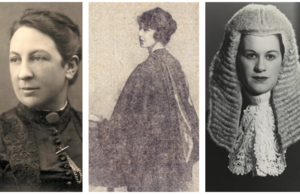Pioneering women in law
A look back on some of the female trailblazers in the legal industry for International Women's Day

Eliza Orme, Madge Easton Anderson and Rose Heilbron
To mark International Women’s Day, we are looking at the trailblazers in the legal industry who pioneered change, paving the way for future generations. From the first female judge at the Old Bailey, to the first woman to obtain a law degree, and the first women-led chambers - these women have left an indelible mark on legal history.
Born in London in 1848, Eliza Orme was the first woman to earn a law degree in England. She became a student at University College London (UCL) in 1871, when the university allowed women to attend lectures. However, she did not receive her LLB until 1888 as prior to this, women were not allowed to graduate. As women were not permitted to qualify as a solicitor or barrister, Elizabeth established her own chambers on Chancery Lane with fellow UCL student, Mary Richardson. Whilst the two women were unable to be licensed conveyancers, and were technically ‘unqualified’, their workload consisted of the drafting of documents and providing legal opinion, rather than advice. Their office was the first legal office in the country to be run by women.
Following the Sex Disqualification (Removal) Act 1919, the first woman to graduate and become a professional lawyer in the UK was Madge Easton Anderson, qualifying in Scotland in 1920. Madge’s application as a law agent was first refused as her mandatory legal training had begun before the passing of the Sex Disqualification (Removal) Act. She appealed this decision and in 1920 the Court of Session upheld her appeal. Not only was Madge the first woman admitted to the legal profession, but in 1937 she was also the first woman to qualify as a solicitor in both Scotland and England.
Rose Heilbron pioneered a series of legal firsts during her career. Born in Liverpool in 1914, she gained three law degrees from the University of Liverpool before becoming the first female judge of the Central Criminal Court. During her tenure at the Old Bailey, she became the first woman to lead in a murder case. In 1968 she became a bencher at Gray’s Inn, where she was the first woman to receive a scholarship years earlier, and eventually became Treasurer in 1985 – the first woman to head one of the four inns of court.